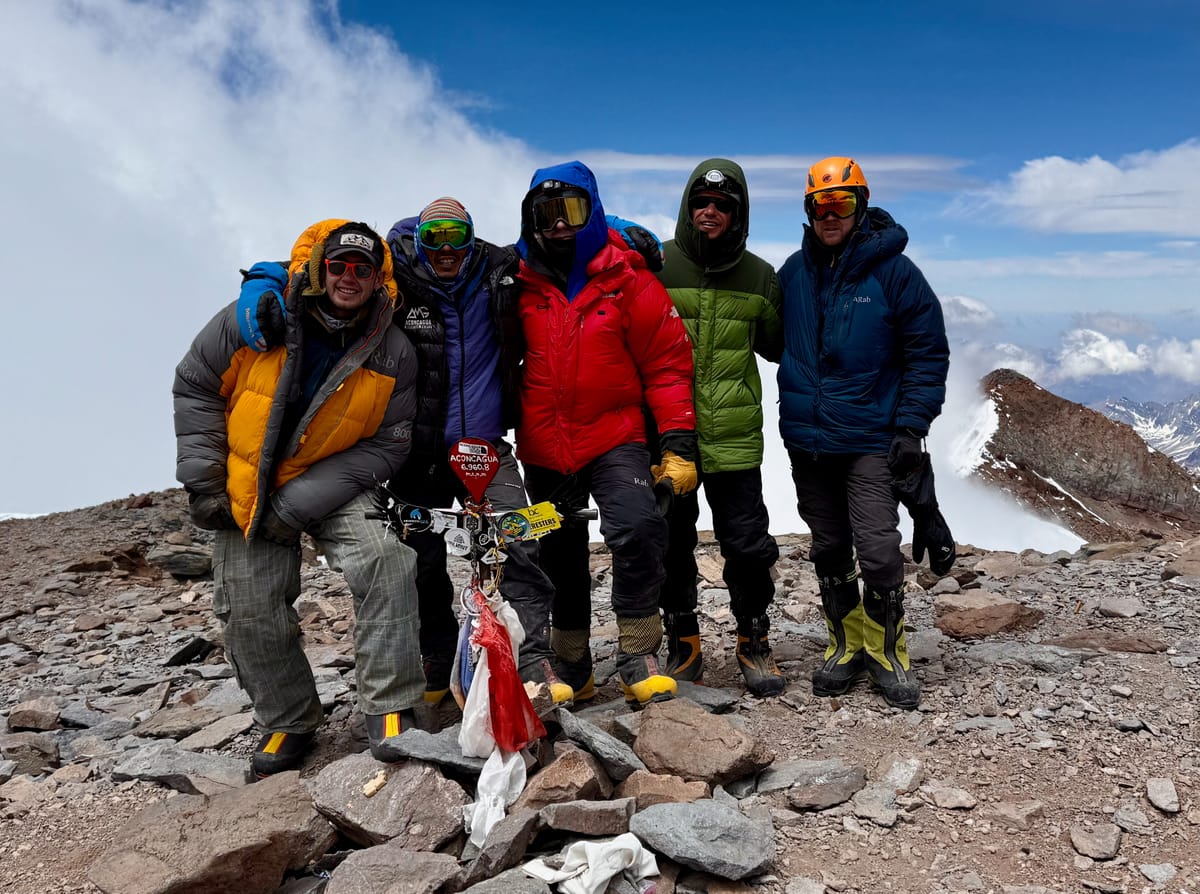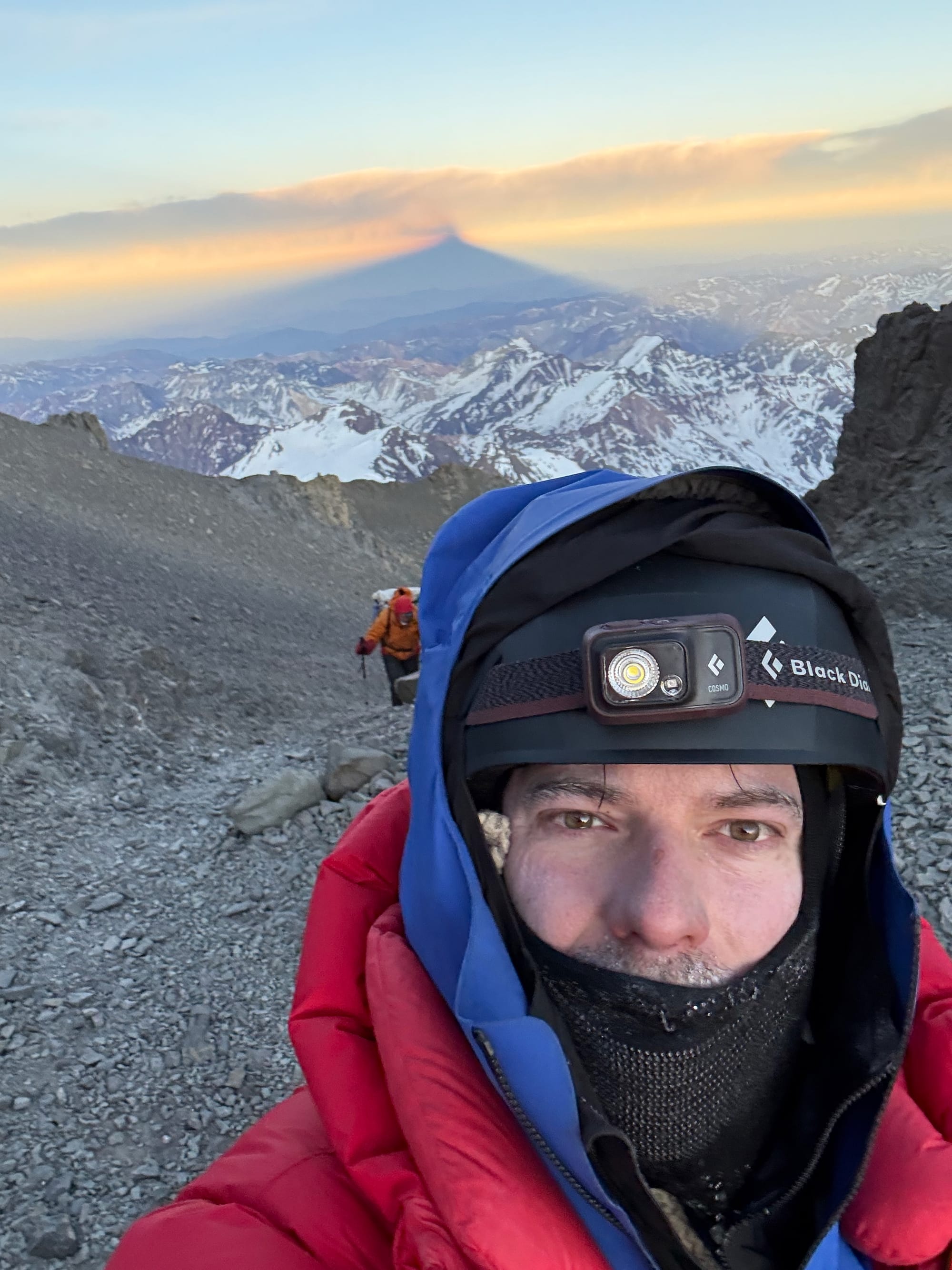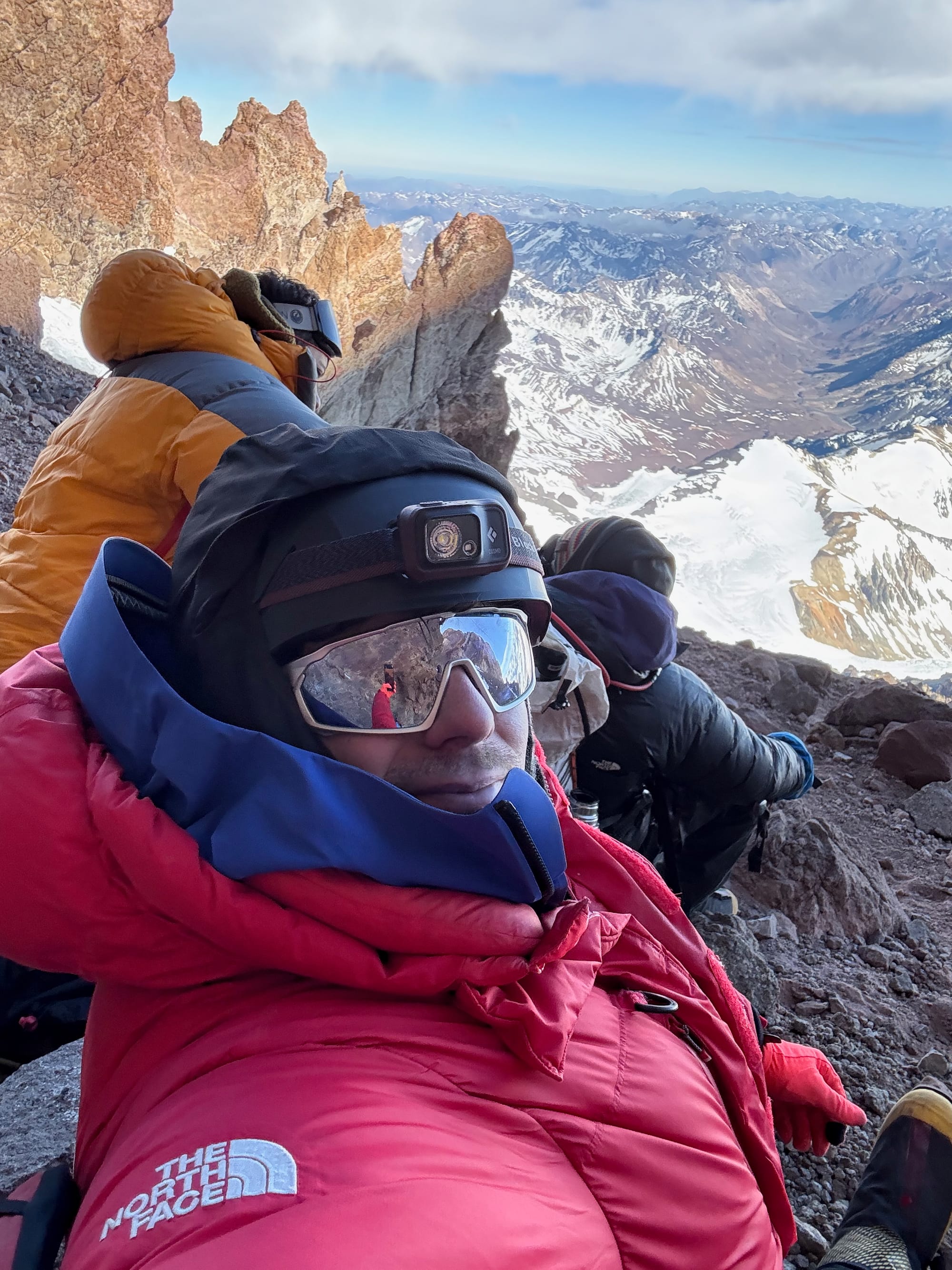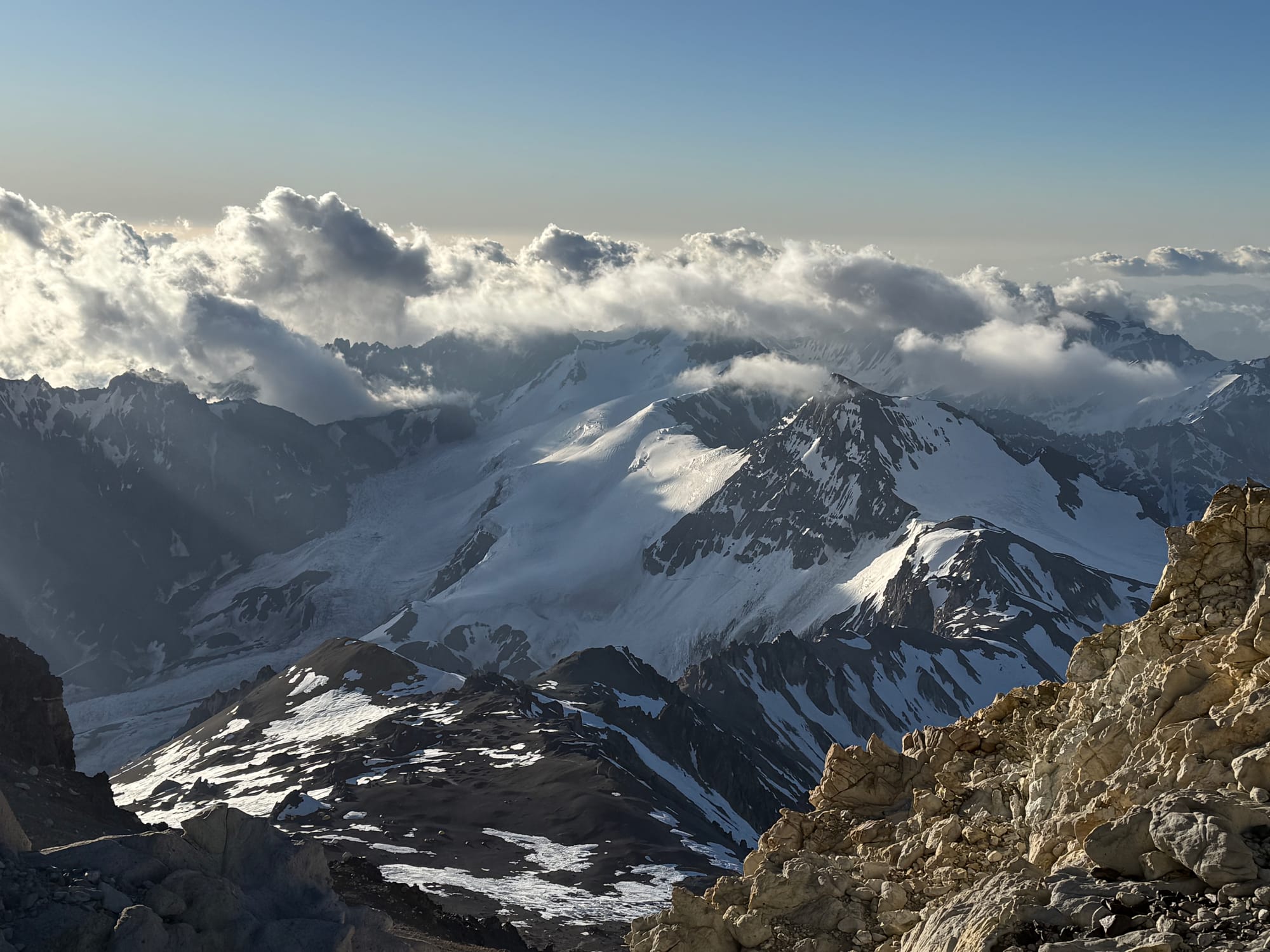Aconcagua - Part 3

This is part three of a four part blog about my 2024 climb of Aconcagua. Part 1 covered the trek up the Vacas Valley. Part 2 described our ascent from Base Camp to Camp 3 (Cholera). Part 4 will cover our descent and trek out of the national park.
Day 14 - Summit Day
This was it. At 19,638 feet, we were already a few hundred feet higher than I'd ever been. I awoke at 2:45am, popped out of our dome and was enveloped by a dense, cold fog.
After breakfast and packing our backpacks, we set out at 4:00am sharp, winding our way up the scree-covered slope in single file. We kept a steady, rhythmic pace up the steep Northwest Ridge for about an hour, aiming for Piedras Blancas — a white rock formation and our first rest stop.
From Piedras Blancas, we pushed on to Refugio Independencia at 20,997', where oxygen levels drop to less than half of what they are at sea level. Refugio Independencia is little more than a small, collapsed wooden hut. We sipped water from nalgenes we kept tucked inside our expedition parkas, and ate what we could — mostly energy bars and gels.

I wish I had more pictures from the early morning hike, but the cold was so biting that I kept my hands inside my 8000-meter mitts as much as possible. It still wasn't enough for me to avoid some nerve damage in my fingertips, however, which lingered for another 5-6 weeks after the trip.
The windchill hovered around minus 30°F during those early morning hours. At one point, we noticed a teammate had a frozen nose — the front half was a pale, icy white, almost like frozen chicken. Fortunately, he didn't suffer any lasting damage, but it was the only moment I seriously questioned why I was on this mountain.

Following our stop at Refugio Independencia, we traversed around the mountain towards La Cueva, at 22,034' of elevation, and arrived at about 10:00am. I'm not entirely clear why its called "the cave", since there isn't one, but the rock wall did provide some protection from the wind.

At La Cueva, we ditched our packs and steeled ourselves for La Canaleta, a steep, 600-foot couloir of loose scree and rocks. We stuck to the right side of the couloir, careful not to send rocks tumbling down onto climbers below. At the top of La Canaleta, we hit the summit ridge, which finally led us to the top. We summited at about 12:15pm, a little over eight hours after departing Camp 3.

Standing at the summit was a powerful moment. After months of training and a couple weeks of trekking and climbing, we'd finally reached the highest peak in the Western Hemisphere. From the summit, we could look down on neighboring mountains, which only days earlier had towered above us.
We were elated to stand at the summit, but we knew the battle was only half over. After about thirty minutes of celebration and reflection, it was time to begin our long descent.
